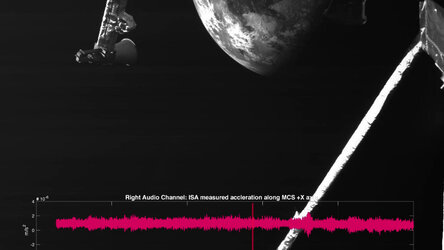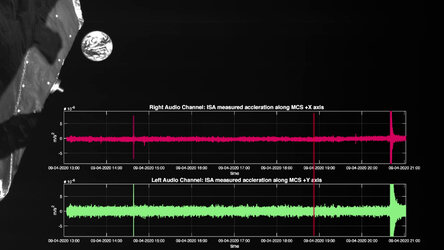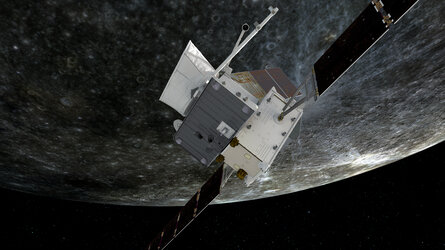Accept all cookies Accept only essential cookies See our Cookie Notice

About ESA
The European Space Agency (ESA) is Europe’s gateway to space. Its mission is to shape the development of Europe’s space capability and ensure that investment in space continues to deliver benefits to the citizens of Europe and the world.
Highlights
ESA - United space in Europe
This is ESA ESA facts Member States & Cooperating States Funding Director General Top management For Member State Delegations European vision European Space Policy ESA & EU Space Councils Responsibility & Sustainability Annual Report Calendar of meetings Corporate newsEstablishments & sites
ESA Headquarters ESA ESTEC ESA ESOC ESA ESRIN ESA EAC ESA ESAC Europe's Spaceport ESA ESEC ESA ECSAT Brussels Office Washington OfficeWorking with ESA
Business with ESA ESA Commercialisation Gateway Law at ESA Careers Cyber resilience at ESA IT at ESA Newsroom Partnerships Merchandising Licence Education Open Space Innovation Platform Integrity and Reporting Administrative Tribunal Health and SafetyMore about ESA
History ESA Historical Archives Exhibitions Publications Art & Culture ESA Merchandise Kids Diversity ESA Brand Centre ESA ChampionsLatest
Space in Member States
Find out more about space activities in our 23 Member States, and understand how ESA works together with their national agencies, institutions and organisations.
Science & Exploration
Exploring our Solar System and unlocking the secrets of the Universe
Go to topicAstronauts
Missions
Juice Euclid Webb Solar Orbiter BepiColombo Gaia ExoMars Cheops Exoplanet missions More missionsActivities
International Space Station Orion service module Gateway Concordia Caves & Pangaea BenefitsLatest
Space Safety
Protecting life and infrastructure on Earth and in orbit
Go to topicAsteroids
Asteroids and Planetary Defence Asteroid danger explained Flyeye telescope: asteroid detection Hera mission: asteroid deflection Near-Earth Object Coordination CentreSpace junk
About space debris Space debris by the numbers Space Environment Report In space refuelling, refurbishing and removingSafety from space
Clean Space ecodesign Zero Debris Technologies Space for Earth Supporting Sustainable DevelopmentLatest
Applications
Using space to benefit citizens and meet future challenges on Earth
Go to topicObserving the Earth
Observing the Earth Future EO Copernicus Meteorology Space for our climate Satellite missionsCommercialisation
ESA Commercialisation Gateway Open Space Innovation Platform Business Incubation ESA Space SolutionsLatest
Enabling & Support
Making space accessible and developing the technologies for the future
Go to topicBuilding missions
Space Engineering and Technology Test centre Laboratories Concurrent Design Facility Preparing for the future Shaping the Future Discovery and Preparation Advanced Concepts TeamSpace transportation
Space Transportation Ariane Vega Space Rider Future space transportation Boost! Europe's Spaceport Launches from Europe's Spaceport from 2012Latest
In Earth’s shadow: Sound of BepiColombo Earth flyby
Thank you for liking
You have already liked this page, you can only like it once!
A sonification of data recorded by the Italian Spring Accelerometer (ISA) aboard the BepiColombo spacecraft as it flew through Earth’s shadow during the April 2020 flyby.
The data show the moment when BepiColombo entered the 34-minute eclipse period when its solar panels were not exposed to direct sunlight, proving that the instrument is capable of detecting the smallest differences in motion.
“The Sun produces a little bit of force that acts on the spacecraft’s surface and also on the solar panel surface,” explains Carmelo Magnafico, a researcher at Italy’s National Institute for Astrophysics (INAF), which developed the instrument. “When the spacecraft goes into the shadow, the effect disappears, and you can see a jump in acceleration in our plot and hear a change in the volume and characteristics of the related sound.”
The spacecraft had already passed its closest approach when it entered the shadow. The recording starts at the distance of 13 460 km away from the Earth’s surface. The spacecraft subsequently enters eclipse while at the distance of 16 496 km and exits it at 24 861 km. The recording ends when the spacecraft reaches the distance of 31 785 km.
The original frequency of the dataset, inaudible to humans, had to be enhanced by the team in order to create the audio track. Measurements from the approximately half-hour eclipse were condensed into less than a half-minute recording.
Carmelo compares the recording to the sound conducted through the rail when a train is approaching. The accelerometer registers vibrations of the spacecraft caused by both, external and internal factors. Being able to clearly pick up such a subtle external influence proved that the instrument is ready for real science.
“This is an extraordinary situation, because since we started the cruise, we have only been in direct sunshine, so we did not have the possibility to check effectively whether our instrument is measuring the variations of the force of the sunlight,” Carmelo says. “This is a proof for us that the instrument is well-calibrated because the jump in the acceleration we measured is in line with our expectations.”
Once at Mercury, the ISA instrument will focus on studying the gravitational field of the smallest planet of the Solar System and its variations due to solar tides. Mapping local gravity anomalies will help scientists to better understand the internal structure of Mercury, a perplexing planet with a larger than expected inner core and an unexpected magnetic field.
The video accompanying the audio sequence consists of images captured by three ‘selfie’ cameras aboard BepiColombo’s transfer module. The images correspond with the time when the audio recording was obtained.
-
CREDIT
ESA/BepiColombo/ISA/ASI-INAF -
LICENCE
CC BY-SA 3.0 IGO or ESA Standard Licence
(content can be used under either licence)
-
Closed captions available Captions and subtitles are available (automatically generated by YouTube) - select your language using the YouTube player controls. A non-YouTube version is available using the 'download' button above.
-
Documentary
-
-
-
-

Earth within reach: Sound of BepiColombo Earth flyby

Approaching Earth: Sound of BepiColombo Earth flyby

BepiColombo Mercury flyby

BepiColombo Mercury flyby















 Germany
Germany
 Austria
Austria
 Belgium
Belgium
 Denmark
Denmark
 Spain
Spain
 Estonia
Estonia
 Finland
Finland
 France
France
 Greece
Greece
 Hungary
Hungary
 Ireland
Ireland
 Italy
Italy
 Luxembourg
Luxembourg
 Norway
Norway
 The Netherlands
The Netherlands
 Poland
Poland
 Portugal
Portugal
 Czechia
Czechia
 Romania
Romania
 United Kingdom
United Kingdom
 Slovenia
Slovenia
 Sweden
Sweden
 Switzerland
Switzerland


























